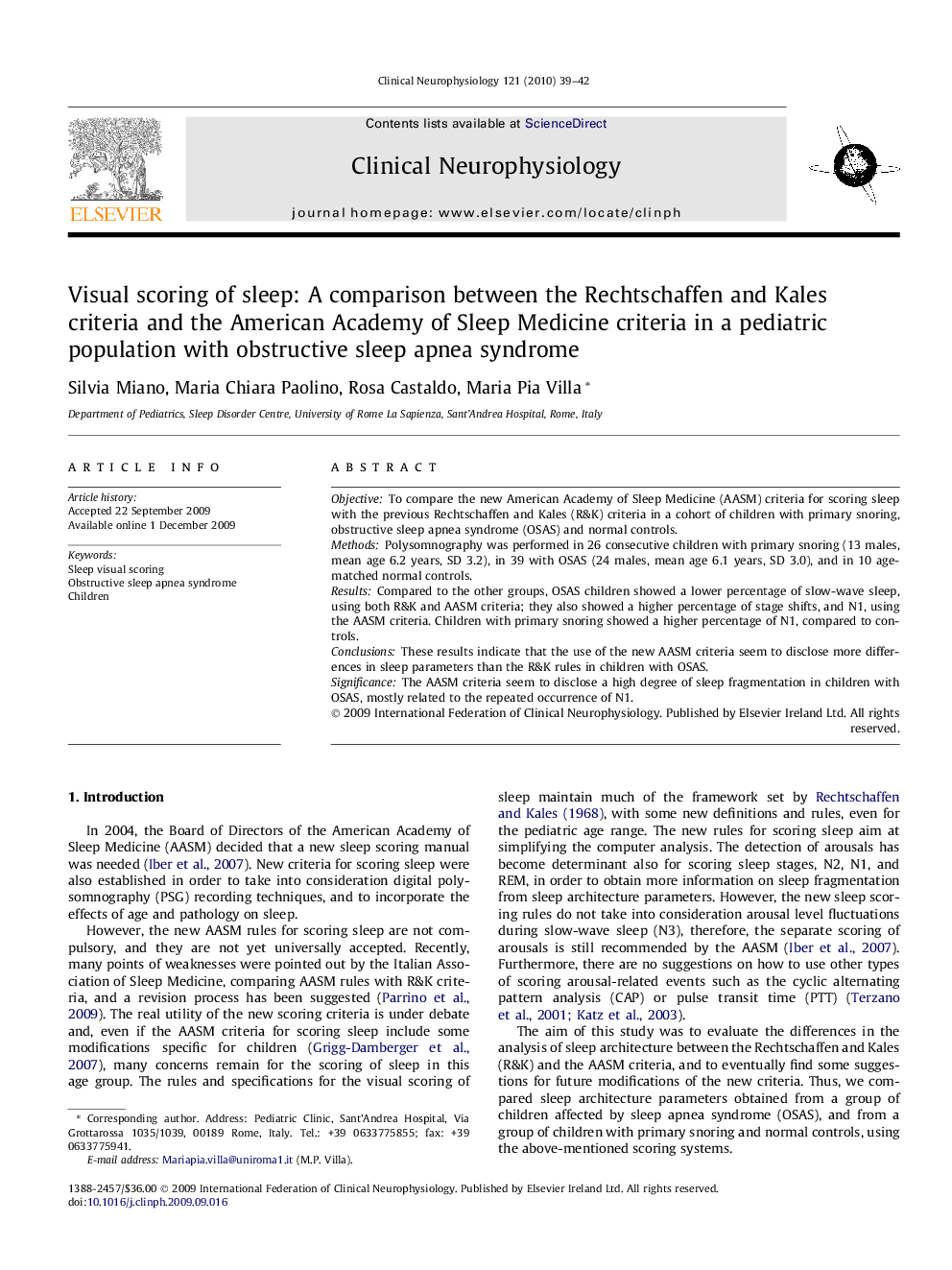| Article ID | Journal | Published Year | Pages | File Type |
|---|---|---|---|---|
| 3045347 | Clinical Neurophysiology | 2010 | 4 Pages |
ObjectiveTo compare the new American Academy of Sleep Medicine (AASM) criteria for scoring sleep with the previous Rechtschaffen and Kales (R&K) criteria in a cohort of children with primary snoring, obstructive sleep apnea syndrome (OSAS) and normal controls.MethodsPolysomnography was performed in 26 consecutive children with primary snoring (13 males, mean age 6.2 years, SD 3.2), in 39 with OSAS (24 males, mean age 6.1 years, SD 3.0), and in 10 age-matched normal controls.ResultsCompared to the other groups, OSAS children showed a lower percentage of slow-wave sleep, using both R&K and AASM criteria; they also showed a higher percentage of stage shifts, and N1, using the AASM criteria. Children with primary snoring showed a higher percentage of N1, compared to controls.ConclusionsThese results indicate that the use of the new AASM criteria seem to disclose more differences in sleep parameters than the R&K rules in children with OSAS.SignificanceThe AASM criteria seem to disclose a high degree of sleep fragmentation in children with OSAS, mostly related to the repeated occurrence of N1.
